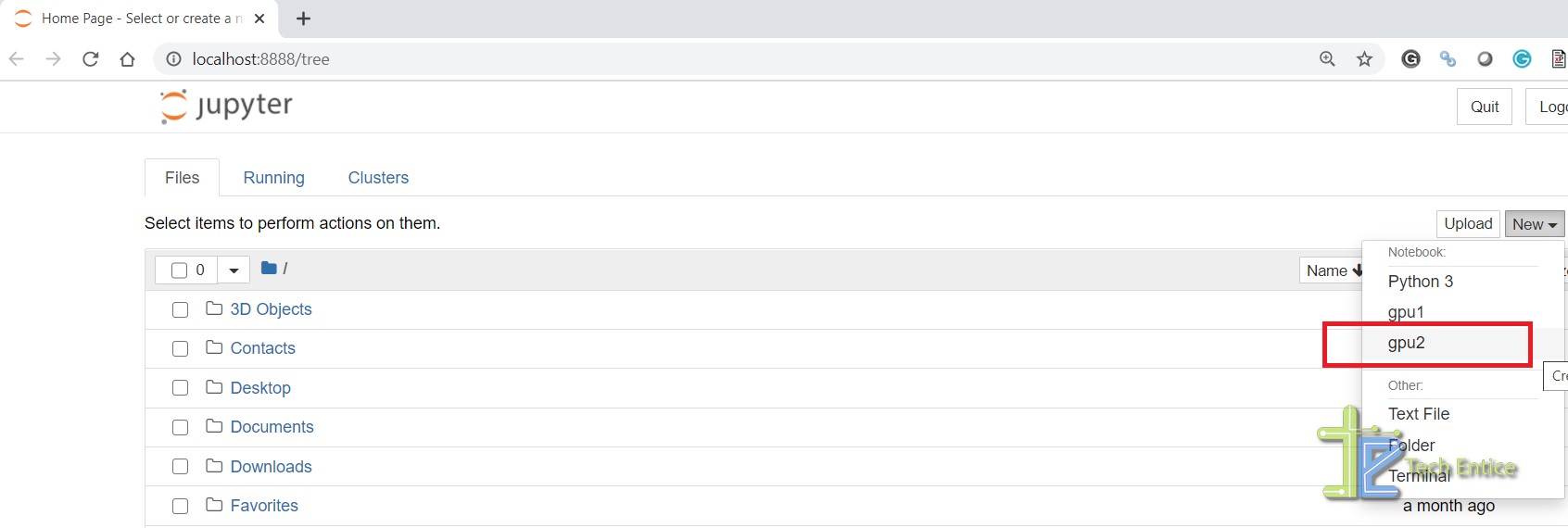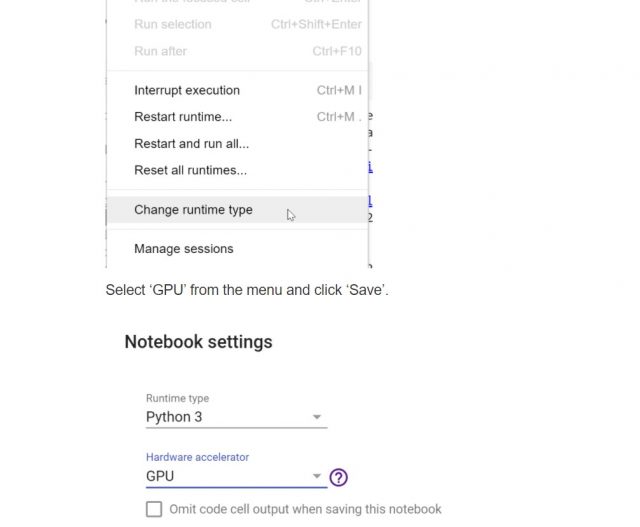
- #Jupyter notebook online gpu install#
- #Jupyter notebook online gpu update#
- #Jupyter notebook online gpu software#
- #Jupyter notebook online gpu professional#
- #Jupyter notebook online gpu windows#

NVML is directly used by the better-known NVIDIA System Management Interface (nvidia-smi). PyNVML is a python wrapper for the NVIDIA Management Library (NVML), which is a C-based API for monitoring and managing various states of NVIDIA GPU devices. In order to do this, you simply need to leverage PyNVML and Bokeh. However, it is fairly straightforward to modify existing dashboards and/or create completely new ones. The existing nvdashboard package provides a number of useful GPU-resource dashboards. To use NVDashboard in this way, only the pip-installation step is needed (the lab extension installation step can be skipped):Īlternatively, one can also clone the jupyterlab-nvdashboard repository, and simply execute the server.py script (for example, python jupyterlab_nvdashboard/server.py ).
#Jupyter notebook online gpu install#
$ jupyter labextension install jupyterlab-nvdashboardįigure 5: The “GPU Resources” dashboard being used outside of Jupyter Lab. # If you are using Jupyter Lab 2 you will also need to run
#Jupyter notebook online gpu windows#
#Jupyter notebook online gpu update#
Bokeh Server: The server component leverages the wonderful Bokeh visualization library to display and update GPU-diagnostic dashboards in real time.The nvdashboard package is available on PyPI, and consists of two basic components: For this reason, the available dashboards can be modified/extended to display any queryable GPU metrics accessible through NVML. Most GPU metrics are collected through PyNVML, an open-source Python package composing wrappers for the NVIDIA Management Library (NVML).

An additional Jupyter-Lab extension embeds these dashboards as movable windows within an interactive environment. The package is built upon a Python-based dashboard server, which support the Bokeh visualization library to display and update figures in real time . 1, NVDashboard enables Jupyter notebook users to visualize system hardware metrics within the same interactive environment they use for development. The GPU dashboards are shown along the right-hand side of the screen, while two dask-labextension dashboards are shown on the bottom left).
#Jupyter notebook online gpu professional#
While this can be accomplished with command-line tools like nvidia-smi, many professional data scientists prefer to use interactive Jupyter notebooks for day-to-day model and workflow development.įigure 1: The NVDashboard Jupyter-Lab extension in action.
#Jupyter notebook online gpu software#
Although acceleration libraries (like cuDNN and RAPIDS) are specifically designed to do the heavy lifting in terms of performance optimization, it can be very useful for both developers and end-users to verify that their software is actually leveraging GPU resources as intended. To achieve optimal performance, it is absolutely critical for the underlying software to use system resources effectively. Given the computational intensity of modern data-science algorithms, there are many cases in which GPUs can offer game-changing workflow acceleration. However, it is especially valuable for users of RAPIDS, NVIDIA’s open-source suite of GPU-accelerated data-science software libraries. NVDashboard is a great way for all GPU users to monitor system resources. NVDashboard is an open-source package for the real-time visualization of NVIDIA GPU metrics in interactive Jupyter Lab environments. This post was originally published on the RAPIDS AI blog here.


 0 kommentar(er)
0 kommentar(er)
